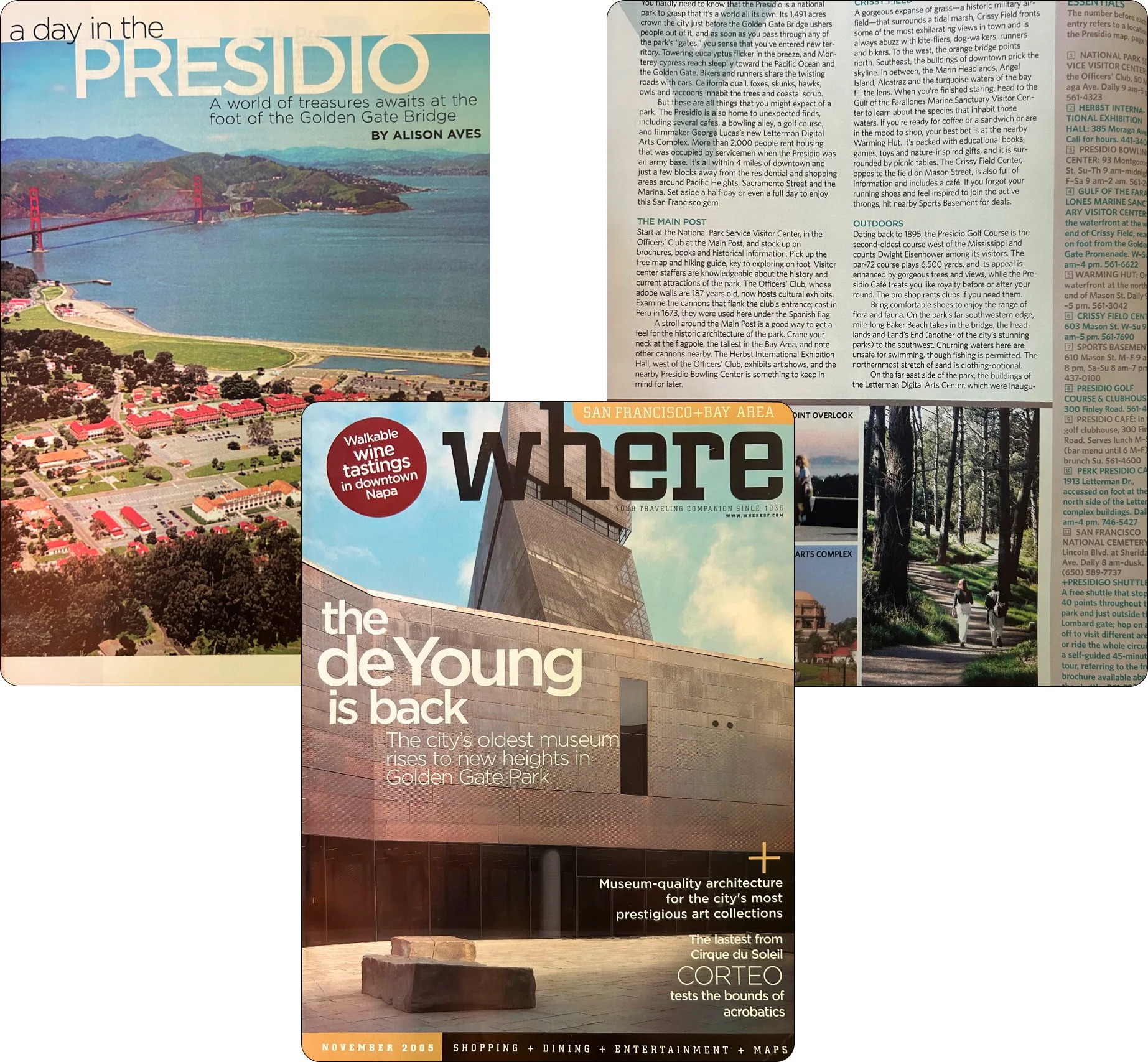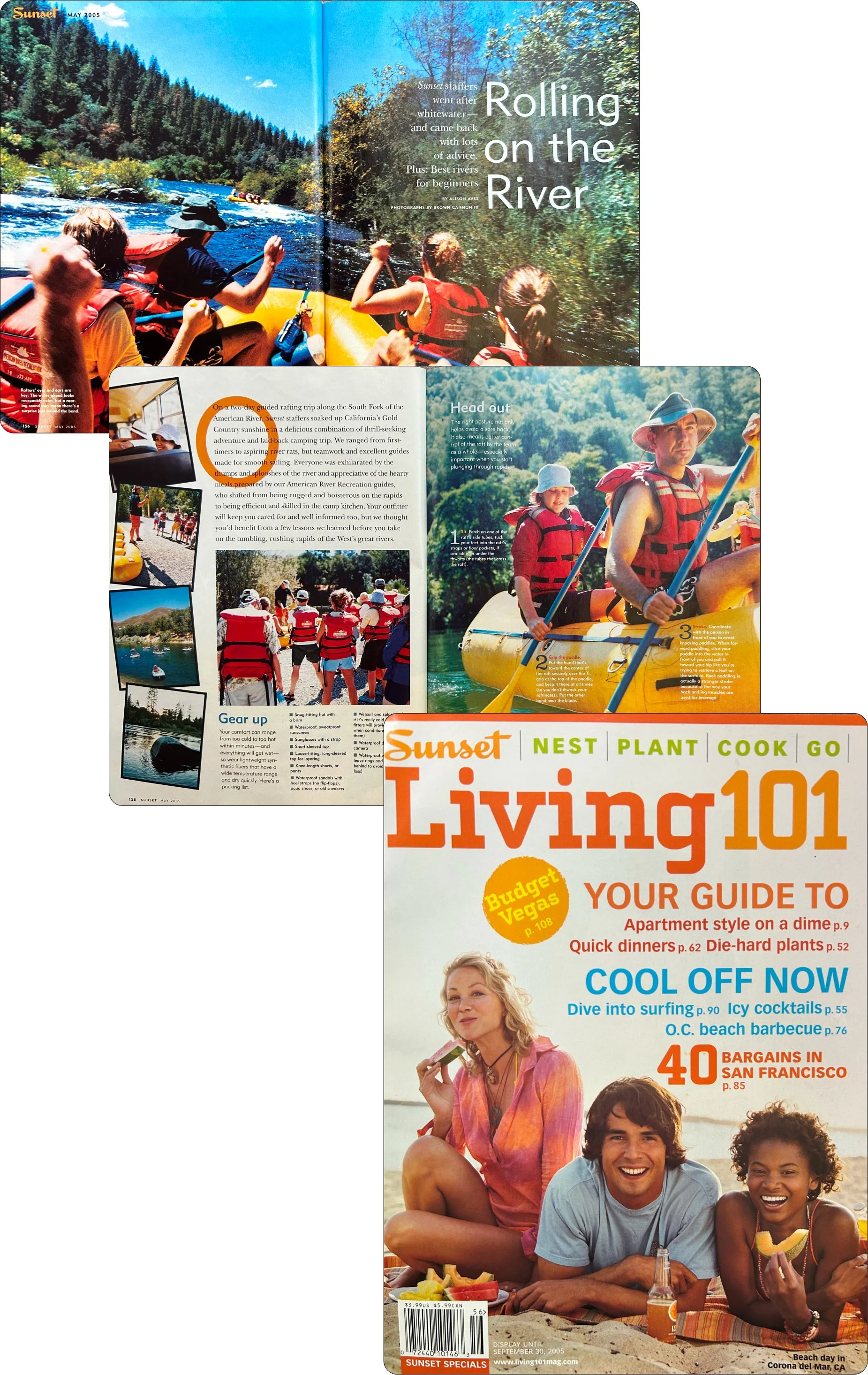Arts & lifestyle editorial
Prior to 2008, I worked in print editorial: As editorial manager for San Francisco Ballet; as editor-in-chief of San Francisco visitor magazine Where; and as executive editor and a copy editor for two West Coast Time Inc. magazines (Living 101 and Sunset, respectively).
-
This was my first foray into content marketing. Learn more here.
-
My first (and only) experience with a purely ad-driven business model was a great opportunity to learn. More info is here.
-
In the era before most editorial was consumed online, this magazine's budget and standards resulted in a lush environment for creating gold-standard content. Take a look.
San Francisco Ballet
Serving an elite audience and institution: The 2008 season was San Francisco Ballet’s 75th, which meant an unusually high level of fanfare. During my time there I launched a podcast series that featured interviews with beloved dancers and iconic visiting choreographers (such as Mark Morris). I edited a gorgeous coffee-table book chronicling the ballet’s history through editorial and full-color photos. And I produced the standard program books and quarterly magazine, Backstage, which was designed to draw subscribers deeper into their relationship with SFB. Creating Backstage included crafting an editorial calendar and getting pitches through all the necessary approvals, then assigning or writing the pieces and performing the work of a managing editor.
Where magazine
From top: Opening pages of feature story about the national park within San Francisco; a cover celebrating a cultural centerpiece of the city
Learning to serve a visiting audience the right info: I loved getting to create the editorial calendar for Where because I adore San Francisco and it was exciting to decide which things to feature for visitors to the city. But it was a delicate balance; it made sense to share some insider secrets, but the fact is that tourist attractions attract tourists. So I needed to strike a balance (especially because many tourist attractions paid for ad space).
I wrote or assigned two or three feature-length pieces each month, in addition to creating a calendar of events and updating guides to the best restaurants, museums, galleries, and other destinations around the city. I also served as a representative of the magazine while reporting, attending openings of restaurants, shops, spas, and other businesses, as well as events such as festivals and performances.
Sunset and Living 101 magazines
From top: Opening spreads of my Maggie-winning rafting how-to; cover of spinoff magazine meant to capture the 20-something market
The mantle of an institution: Sunset magazine was a treasure in the Western United States at more than a century old. Its standards for its editorial calendar; its reporting and writing; its fact checking; and its copy editing were beyond exacting. Any errors that were found post-printing were included in the Folder of Shame that was passed around the office for each of us to review and initial. I learned how to find the sweet spot between service and lifestyle, while we worked to help attract a younger audience. My story on whitewater rafting (top; partial) won a Maggie Award for Best How-To Feature. In addition, I was the executive editor of the pilot issue of a new magazine, Living 101, that was designed to appeal to a younger, non-home-owning segment of the market. That issue also won a Maggie Award for Best New Publication.


